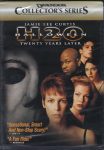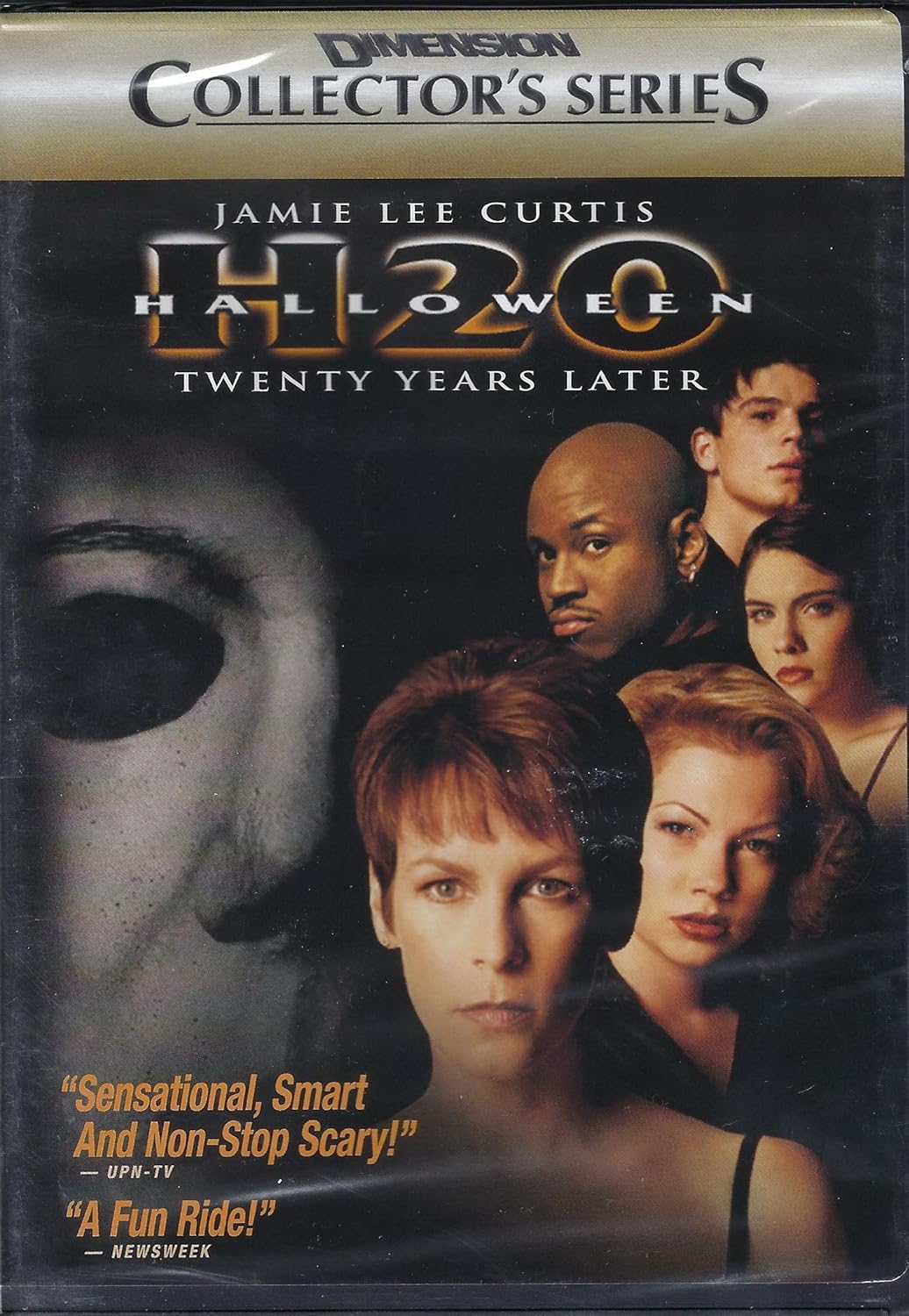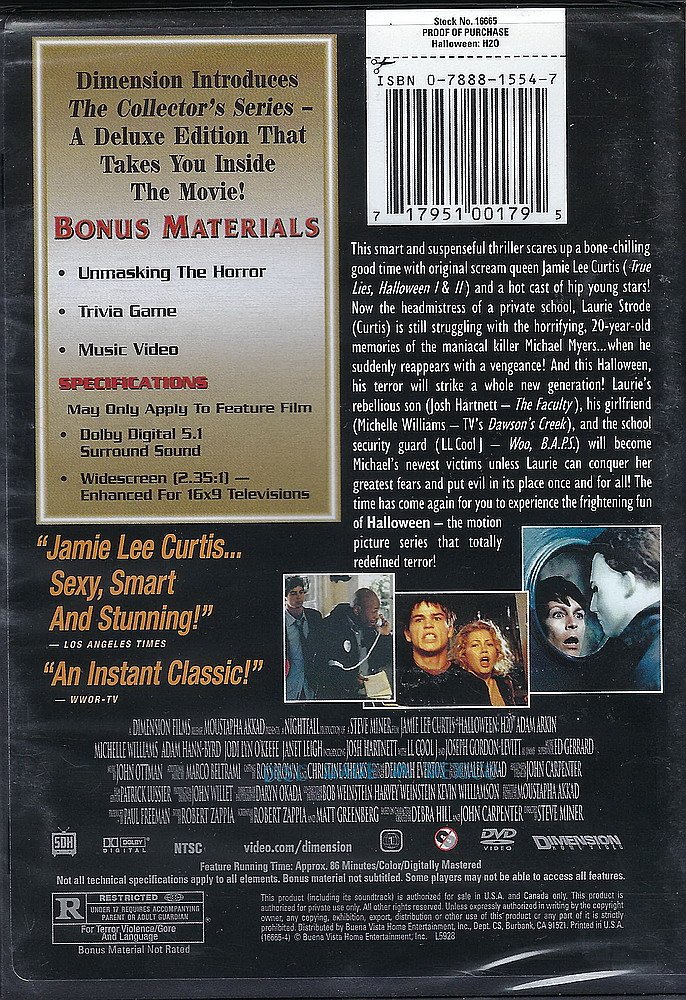
H20: Halloween: Twenty Years Later Review Halloween H20 – Oemiu
The Legacy of Halloween H20: A Timeless Horror Classic
Halloween H20: Twenty Years Later, commonly referred to as Halloween H20, is a seminal work in the horror genre that has left an indelible mark on the cinematic landscape. Released in 1998, this film marked a significant turning point in the Halloween franchise, disregarding the events of Halloween 4, 5, and 6, and instead creating a direct sequel to the original Halloween II. The premise of Halloween H20 revolves around Laurie Strode, played by Jamie Lee Curtis, who has been living in hiding under an assumed identity, haunted by the traumatic events of her past. The movie masterfully weaves together themes of survival, the lasting impact of trauma, and the unrelenting pursuit of evil.
The return of Jamie Lee Curtis to the franchise was a pivotal moment, bringing back the original horror heroine who had become synonymous with the genre. Her portrayal of Laurie Strode, now a headmistress at a private school, trying to keep her past a secret from her son, John, adds depth to the narrative. The character development is rich, exploring the psychological effects of fleeing from one’s past and the difficulty of creating a new identity. This aspect of the film resonates deeply, making it more than just a horror movie; it’s a story about resilience and the human spirit’s capacity to endure suffering.
The narrative of Halloween H20 also explores the theme of generational trauma and the impact of Laurie’s experiences on her relationship with her son. The film introduces a fresh cast of characters, including Josh Hartnett as John Strode, which helps in refreshing the series while maintaining its core essence. The inclusion of younger characters brings a new dynamic, appealing to a newer audience while satisfying long-time fans of the franchise. This blend is crucial in understanding why Halloween H20 was well-received upon its release and continues to be celebrated as a highlight in the series.
Technical and Cinematic Achievements
Technically, Halloween H20 boasts impressive cinematography, with the use of lighting and camera angles that enhance the tense atmosphere, making the viewing experience feel claustrophobic and intense. The score, composed by John Ottman, perfectly complements the on-screen action, elevating the fear factor with its haunting melodies. The film’s ability to blend suspense with outright horror elements keeps the audience on the edge of their seats, guessing until the very end. This masterful blend of music, visuals, and storytelling is a testament to the directorial vision of Steve Miner and the cinematographic prowess of Daryn Okada.
In terms of its place within the broader horror genre, Halloween H20 can be seen as part of a late 90s resurgence of slashers and horror films, influenced by the success of Scream in 1996. However, unlike many of its contemporaries, Halloween H20 balances nostalgia with innovation, making it a standout in the era. The self-aware, postmodern horror trend that emerged during this time period is cleverly avoided, instead opting for a more straightforward, suspense-driven narrative that focuses on character development and the unstoppable force that is Michael Myers.
Impact and Reception
The reception of Halloween H20 was largely positive, with many praising the return of Jamie Lee Curtis and the fresh take on the franchise. The film performed well at the box office, grossing over $75 million worldwide on a budget of $17 million, making it a commercial success. Critically, it received mixed reviews but is generally regarded as one of the better sequels in the Halloween franchise. Over time, Halloween H20 has developed a cult following, with fans appreciating its effort to revive the series and provide a satisfying continuation of Laurie Strode’s story.
One of the most significant impacts of Halloween H20 is its influence on the horror genre. By rebooting the franchise and focusing on the core elements that made the original successful, it paved the way for other horror series to revisit their roots. The decision to disregard previous sequels and create a more direct continuation of the original story has been a strategy adopted by other franchises, showing the influence of Halloween H20 on the broader horror landscape.
| Movie Title | Release Year | Box Office | Critical Reception |
|---|---|---|---|
| Halloween (1978) | 1978 | $70 million | 96% on Rotten Tomatoes |
| Halloween H20: Twenty Years Later | 1998 | $75 million | 53% on Rotten Tomatoes |
| Halloween (2018) | 2018 | $250 million | 79% on Rotten Tomatoes |
The comparison above highlights the enduring success of the Halloween franchise, with Halloween H20 acting as a pivotal moment in its history. The 2018 film, also titled Halloween, follows a similar approach by ignoring all previous sequels and serving as a direct sequel to the original, further solidifying the impact of Halloween H20 on the franchise’s trajectory.
Themes and Social Commentary
Beneath its surface-level horror elements, Halloween H20 delves into several themes that resonate with audiences. The concept of trauma and how it affects individuals and their loved ones is a central theme. Laurie Strode’s character arc is a powerful exploration of post-traumatic stress disorder (PTSD) and the struggle to overcome fear. This portrayal is not only haunting but also thought-provoking, inviting viewers to consider the long-term effects of violence and fear on survivors.
Moreover, the film touches on the theme of identity and the masks people wear, both literally and metaphorically. Michael Myers, with his iconic mask, represents the faceless evil that haunts Laurie, while she herself grapples with her true identity, separate from the traumatic events of her past. This duality is a compelling aspect of the movie, adding layers to the traditional slasher narrative.
The benefits of revisiting and reimagining horror classics like Halloween H20 include:
– The potential to attract new audiences while pleasing long-time fans.
– The opportunity to explore different themes and narratives, keeping the series fresh.
– The chance to reflect on and comment about contemporary issues through the lens of horror.
Legacy and Cultural Impact
The cultural impact of Halloween H20 extends beyond the film itself, influencing the horror genre as a whole. Its approach to storytelling, focusing on strong characters and suspense over gore, has been admired and emulated. The film’s success can also be seen as a precursor to the modern trend of legacy sequels, where original characters and storylines are revisited decades later, appealing to both nostalgia and new audiences.
In addition to its influence on horror cinema, Halloween H20 has become a staple of pop culture, with references to the film appearing in various forms of media. The character of Laurie Strode, especially, has become an icon of female empowerment, symbolizing the fight against relentless evil and the struggle to overcome personal demons.
The long-term variations of Halloween H20, including Halloween: Resurrection, Halloween (2007), and Halloween (2018), each offer their own take on the franchise, with some directly following the events of H20. These iterations demonstrate the enduring appeal of the series and its ability to evolve, incorporating new ideas while retaining the essence of what makes Halloween so terrifying and compelling.
FAQ
What is the main plot of Halloween H20?
Halloween H20 follows Laurie Strode, who has faked her own death and is living under an assumed identity. She must confront her past when Michael Myers discovers her whereabouts and begins to stalk her and her son. The film blends elements of horror and suspense, creating a tense narrative that keeps viewers engaged until the very end.
Who plays the role of Laurie Strode in Halloween H20?
Jamie Lee Curtis reprised her role as Laurie Strode in Halloween H20, marking a significant return to the franchise. Her performance was widely praised, and she has since become synonymous with the character and the horror genre as a whole.
What was the critical reception of Halloween H20 upon its release?
The critical reception of Halloween H20 was mixed, with some critics praising the film’s suspenseful atmosphere and Jamie Lee Curtis’s performance, while others found it to be too formulaic and lacking in originality. Despite this, the film has developed a cult following over the years and is now regarded as one of the better sequels in the Halloween franchise.
How does Halloween H20 fit into the broader Halloween franchise?
Halloween H20 disregards the events of Halloween 4, 5, and 6, serving as a direct sequel to Halloween II. This approach allowed the film to reboot the series and provide a fresh take on the Laurie Strode character and the Michael Myers mythology. The film’s success paved the way for future sequels and reboots, including the 2018 film Halloween, which follows a similar continuity approach.
What themes does Halloween H20 explore?
Halloween H20 explores several themes, including trauma, identity, and the concept of evil. The film delves into the psychological effects of Laurie’s past experiences and her struggle to come to terms with her new identity. It also touches on the idea of Michael Myers as a symbol of relentless evil, challenging the notion of good vs. evil in a more nuanced way than traditional horror narratives.
How has Halloween H20 influenced the horror genre?
Halloween H20 has had a significant influence on the horror genre, particularly in its approach to storytelling and character development. The film’s focus on suspense and strong characters has been admired and emulated, and its success can be seen as a precursor to the modern trend of legacy sequels. The film’s exploration of themes such as trauma and identity has also added depth to the horror genre, moving beyond traditional slasher narratives.
What is the cultural significance of Halloween H20?
The cultural significance of Halloween H20 lies in its enduring impact on popular culture. The film has become a staple of horror cinema, with references to it appearing in various forms of media. The character of Laurie Strode has become an icon of female empowerment, symbolizing the fight against evil and the struggle to overcome personal demons. The film’s influence can be seen in many aspects of contemporary horror, from its storytelling approaches to its themes and characters.







